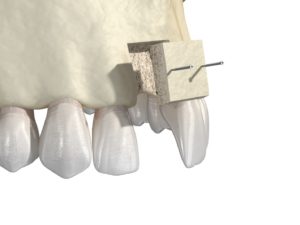
Patients and dental professionals around the world agree that dental implants are the best way to replace lost teeth. However, one of the few things about them that might be perceived as a downside is that the process for placing them can be somewhat complex. In fact, many patients require a dental bone graft before they can be considered a candidate for implants. If that is true of you, there is no need to worry. Read on below to learn more about this surgery and what you can expect as you are recovering from it.
Bone Grafting: The Basics
In order for dental implants to succeed, they need to be firmly embedded in the jawbone, a fact that means the jawbone must be strong enough and large enough to support the implants. In patients who have suffered some bone loss in the jaw — perhaps due to injury, bone resorption, or other factors — a graft is often the ideal way to fortify the bone and prepare the patients for a complication-free tooth replacement journey.
There are multiple types of bone grafts. In some cases, granulated bone material is placed on the jaw to strengthen it. In other cases, a small block of bone is put in place. Bone grafts can be performed on either the upper or lower jawbone.
What Does Recovery Feel Like?
You will likely be sedated and numbed during your surgery, so you should feel little to nothing while your dental team is working. After the sedation and anesthesia wear off, it is normal to experience some soreness and swelling. Most patients find that the worst of the discomfort begins to subside within three or four days. In the meantime, you should get plenty of rest and take all medications as recommended by your surgical team. For example, you may need to take antibiotics and pain relievers.
Your Recovery Timeline
Although the discomfort from your surgery should disappear relatively quickly, that doesn’t mean that your body is fully recovered. It can take several months — perhaps a year or longer — before your body fully integrates the grafted material and is ready to accept dental implants. Exactly how long it takes will depend on the type of graft, the extent of the surgery, your overall health, and other factors.
As your graft is integrating with your jaw, you will visit your surgical team periodically so they cam monitor your recovery and work on planning the next steps in your dental implant journey.
Bone graft recovery requires some time and patience, but the end result — a complete and healthy smile — will make any inconvenience well worth it!
Meet the Practice
The three periodontists at our practice combine experience, expert skill, and advanced technology to offer a range of treatments, including dental bone grafting, dental implant placement, and more. When you are ready to get started on replacing your lost teeth, they would be pleased to serve you. If you would like to schedule an appointment or ask questions, contact us at 508-753-5444.

